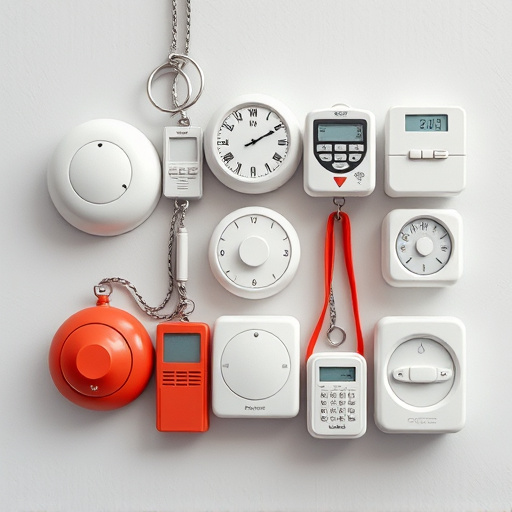Personal Security Alarms, powered by robust batteries, are vital tools for emergency safety. With varying battery lives, high-quality models offer extended durability. Modern features like low-battery indicators and smartphone apps enhance control and alerts. Evaluating battery life is key; long-lasting batteries provide peace of mind and extra time to respond in emergencies. Regular maintenance, including battery checks and understanding the user manual, ensures these devices' effectiveness for personal security.
Personal safety devices are indispensable tools in emergency situations, offering peace of mind and potentially saving lives. In this article, we explore why these devices are essential and delve into the various types available, focusing on personal security alarms. We’ll break down the key features and functionality, with a critical eye towards battery life – a crucial consideration for devices designed to be reliable when it matters most. Additionally, we provide best practices for maintenance and usage to ensure their effectiveness.
- Understanding Personal Safety Devices: Why They're Essential
- Types of Personal Security Alarms: Features and Functionality
- Evaluating Battery Life: A Key Consideration for Emergency Devices
- Ensuring Peace of Mind: Best Practices for Maintenance and Usage
Understanding Personal Safety Devices: Why They're Essential
Personal safety devices are essential tools in emergency situations, providing individuals with a sense of security and peace of mind. These devices, often equipped with features like Personal Security Alarm and long-lasting Battery Life, serve as powerful means of protection. In today’s world, where unforeseen circumstances can arise at any moment, having a reliable personal safety device is crucial.
The need for such devices becomes particularly apparent in high-risk environments or when traveling alone. A long-lasting battery ensures that the device remains operational when every second counts, allowing users to quickly alert others or authorities in case of danger. This simple yet effective technology can be a game-changer during emergencies, empowering individuals to take control and enhance their personal security.
Types of Personal Security Alarms: Features and Functionality
Personal Security Alarms come in various types, each designed for specific needs and scenarios. One crucial aspect that sets them apart is their battery life. These devices are essential tools for personal safety, offering a sense of security and rapid alerting during emergencies. From compact, key-chain-sized alarms to louder, more robust models, they can be easily carried or installed at home or the office.
The Personal Security Alarm Battery Life varies significantly. High-quality models boast extended battery life, ensuring they’re reliable in prolonged situations. Features like automatic power-off functions and low-battery indicators help users stay informed. Some advanced alarms even integrate with smartphone apps, providing remote control and real-time alerts. This tech enhances not just the alarm’s functionality but also its overall personal security value.
Evaluating Battery Life: A Key Consideration for Emergency Devices
When considering personal security alarm devices for emergency situations, evaluating battery life is a crucial step. These devices often rely on long-lasting batteries to ensure they function when needed most, so their power source should be a top priority. Look for products that offer extended battery life, as this can make all the difference in critical moments. A device with a robust battery might just provide that extra time to call for help or alert others during an emergency.
The longevity of the battery also correlates directly with peace of mind. Knowing your personal security alarm is always charged and ready can alleviate stress and ensure you’re prepared. Many modern devices come equipped with advanced power-saving features, allowing them to operate efficiently while still maintaining a strong battery life, making them reliable companions for your safety and peace of mind.
Ensuring Peace of Mind: Best Practices for Maintenance and Usage
Ensuring peace of mind is a primary motivation for acquiring personal safety devices, and proper maintenance can significantly enhance their effectiveness during emergencies. Regularly checking the battery life of your Personal Security Alarm is a crucial first step. Most modern alarms offer long-lasting batteries, but it’s essential to set reminders to replace or recharge them at intervals recommended by the manufacturer. This simple practice guarantees that your device will be operational when needed most.
Beyond battery health, familiarizing yourself with the alarm’s usage is vital. Read and understand the user manual thoroughly. Practice setting off the alarm and familiarize yourself with any additional features like remote controls or smart home integration. Regular testing of these devices in various scenarios can build confidence and ensure they function as intended when emergencies arise, providing a sense of security and control over potentially dangerous situations.
Personal Security Alarms are invaluable tools for ensuring safety in emergency situations. By understanding their features, evaluating battery life, and practicing proper maintenance, individuals can gain peace of mind knowing they’re prepared. These devices play a crucial role in providing immediate assistance and increasing response times, ultimately enhancing personal security. When choosing and using a Personal Security Alarm, prioritizing its battery life ensures reliability when it matters most.
